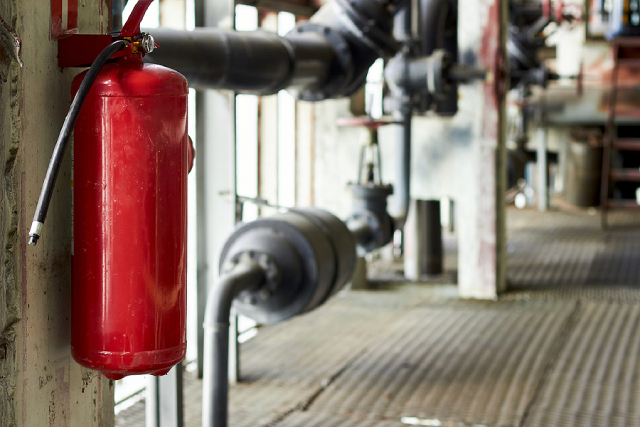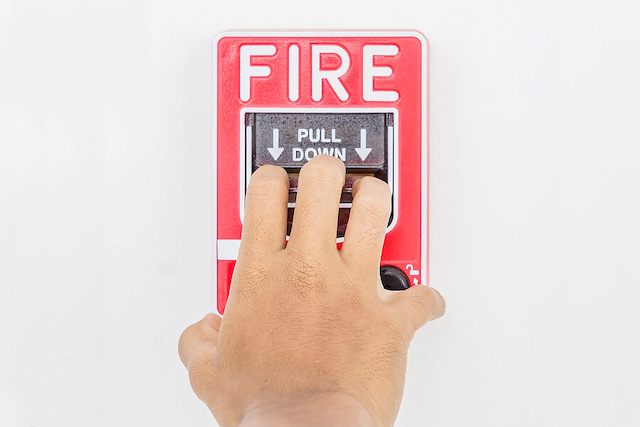Effectively putting out fires in an emergency starts with understanding that fires are categorised depending on the source or fuel that keeps them burning. With this distinction comes several classifications of fire extinguishers designed for quickly and efficiently extinguishing specific types of fire. For instance, a CO2 or carbon dioxide fire extinguisher is generally used for Class B fires (gasses and flammable liquids) and Class C fires (energised electrical).
Carbon dioxide extinguishers use a non-flammable CO2 gas suppression agent. These extinguishers are easily recognisable from their lack of a pressure gauge and a hard horn. Given the low temperature of the CO2 firefighting agent, CO2 fire extinguishers tend to shoot out dry ice upon discharge. Similar to any other ABC fire extinguisher, users must follow the PASS method when operating a CO2 fire extinguisher. With that said, here are five facts to know about carbon dioxide extinguishers to ensure proper usage and safety.
1. Safe to use on liquid fires and live electrical
As mentioned, CO2 fire extinguishers are designed to combat Class B fires which include combustible liquids and gasses, oil, oil-based lacquers and paints, solvents, and greases except for cooking grease/oil. In addition, they are safe to use on Class C fires involving live electrical and equipment.
2. The horizontal discharge is smaller than other extinguishers
Since carbon dioxide is a gaseous compound, it will naturally spread once released from the extinguisher. As such, the CO2 stream’s discharge range is only around one to three meters, which is typically half the average range of ABC extinguishers. Due to the limited range, stepping closer to the fire is necessary to ensure effectiveness.
3. CO2 displaces oxygen to put out the fire
Oxygen is one of the four elements that keep a fire burning. Carbon dioxide fire extinguishers release a cloud of CO2 that looks like dry ice, which displaces and smothers the oxygen near the fire. Therefore, this type of fire extinguisher has significantly reduced efficacy when used outdoors due to the wind, blowing the gas away from the fire and bringing it more oxygen.
4. Does not leave any residue behind
Residue is an important concern after extinguishing a fire, as it can potentially lead to damage. For instance, the firefighting agents in dry chemical fire extinguishers contain compounds, such as monoammonium phosphate, potassium bicarbonate, and sodium bicarbonate, that leave behind a corrosive powder, requiring immediate clean-up especially if they come into contact with metal (check out our article for some clean-up tips for fire extinguisher residue).
However, this is not the case with CO2 fire extinguishers. After the gaseous firefighting agent cuts off oxygen from the fire and reduces its temperature, it simply dissipates into the air without any residues. This is advantageous for environments with costly electronic equipment since there is no risk of corrosion.
5. Keep away from the CO2 discharge
As mentioned, the CO2 agent is extremely cold and thus turns into dry ice once discharged, which helps cool down flammable liquids, gasses, and electronics. However, exposure to bare skin can cause frostbite, hence the need to be careful and avoid contact with the discharge when using the fire extinguisher.
Conclusion
Different fire extinguisher classes are used to combat different types of fire. Carbon dioxide fire extinguishers use a gas firefighting agent designed for Class B and Class C fires and can prove problematic and potentially hazardous to those unfamiliar with its inner workings. The contents of this article hope to prevent that and ensure first responders make effective use of a CO2 fire extinguisher should the need arise.
If you are a fire safety manager looking to stay competitive and update your skills, there is no better way than enrolling in a fire safety course in Singapore. TenLearn provides an online learning platform featuring Fire Safety Manager (CPD Programme) covering all things fire safety to keep your knowledge up to date and gain CPD points for every FSM course in Singapore completed.


Write a public review